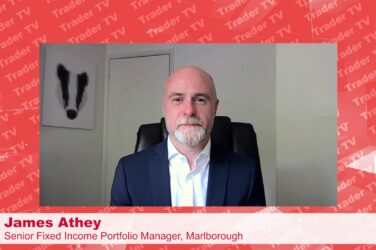
A massive increase in corporate bond issuance and a depletion of capital that dealers can use to facilitate trading have made it difficult for investment managers and dealers to access liquidity.
“The normal incentives for market making have been vastly changed, and as a result our behaviors have changed,” Edward Marrinan, macro credit strategist and co-head strategy, Americas at RBS Securities, said during a panel hosted by ATS operator Liquidnet on Thursday.
The run-up to 2008 was a frothy period characterized by record high market levels, leveraging and M&A activity. “It was not uncommon in 2007 for an institutional bond investor to solicit a bid for bonds in a block as large as 50 or even 100 million,” Marrinan said. “It was not uncommon that a single market maker would transact that trade. Today, that would be an exceptionally rare occurrence.”

Edward Marrinan, RBS Securities
If a large asset management company approached a market maker with a large block today, the market maker might only bid on 10 percent of the block, if at all. “They don’t want to be saddled with that entire position in their trading book at a time when it’s very difficult to move that risk-on position, and the capital charges for holding such a position are so high,” Marrinan said. “There are a lot of factors that have appeared since 2008 that have prevented the free flow of trading in terms of liquidity, size, market making and transparency that marked the pre-2008 period.”
Vega-Chi, a corporate bond trading platform that was acquired by Liquidnet, aspires to create an “all-to-all” electronic fixed income platform that can cross block-sized trades through a central limit order book of actionable liquidity.
“It was evident that there had to be a better way for large asset managers to trade with each other,” said Constantinos Antoniades, founder and CEO of Vega-Chi. “It’s insane to have 91% of the asset class held by the buyside, yet the buyside doesn’t have the ability to interact with each other.”
The dearth of market making activity could spell trouble if an exogenous shock occurs, Marrinan said.
“Is there a market stability issue in having to deconstruct what otherwise would have been block trades into smaller trades?” he said. “Not necessarily. But there is definitely a market instability threat arising from external shocks. You don’t have to be too creative to get to an outcome where the current period of risk appetite, tranquility and low volatility in the financial markets evolves into something much more treacherous if we have external shocks.”
Milton Ezrati, senior economist and market strategist at Lord Abbett, said the U.S. economy, in spite of the fact that the first quarter was disappointing, is not going into recession. As a consequence, the Federal Reserve will continue its taper on the long end of the market, and will probably raise short-term rates sometime in 2015. “That means a lot of people who have crowded into what they believe are risk-averse assets such as Treasuries, agencies, high-grade corporates, are going to be very disappointed because yields are going to go up and they are going to suffer capital losses,” he said.
There is also a tremendous rise in M&A activity in the marketplace, which will put further pressure on high-quality credit. “Firms that have issued bonds, some of them junk bonds, and then hoarded cash, are now putting it back to work. So in addition to investors rushing for the exits, there will be corporations issuing bonds for the first time in a while,” said Ezrati. “So the situation for bond investors, particularly high-grade Treasuries and agencies, is averse.”





